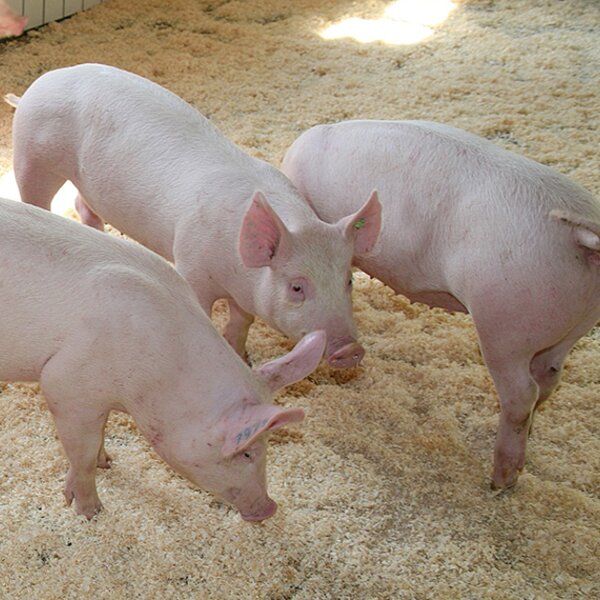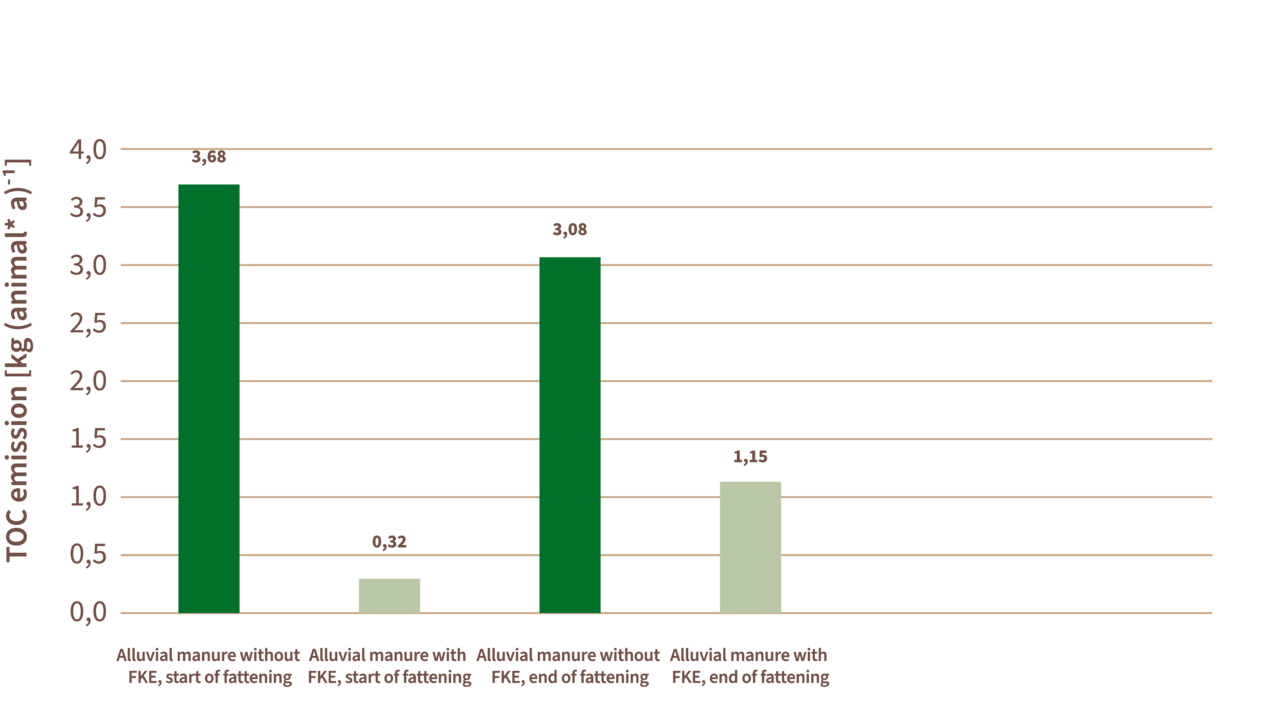MK Soil and FHE in pig fattening
Reducing ammonia from pig fattening
The use of MK Soil and the FHE (Fermented Herb Extract) feed supplement for fattening pigs reduces die emissions of the greenhouse gases methane, ammonia and nitrous oxide by 35 per cent on average in pig pens with sloping floors. At the same time, Multikraft technology minimises total organic carbon (TOC) emissions by an impressive 78 per cent.
Do the sloping floor management system and “Fermented Herb Extract” (FHE) have an effect on emissions of NH3, CH4 and N2O? This is what researchers from the University of Natural Resources and Life Sciences in Vienna intended to find out.

The study
In mechanically ventilated areas with 16 bays, each of which housed ten to twelve pigs, emissions of greenhouse gases and odours were measured using a high-resolution FTIR spectrometer.
The effect of the probiotic additive was tested in area 1, the area with manure removal using sluicing. Firstly, a solution with a high concentration (7 litres of MK Soil in 7 litres of water) was sprayed daily in the pig pen. Later, the amount was reduced (4 litres of MK Soil in 4 litres of water). After a while, FHE was added to the liquid feed (3 litres of FHE in 1,000 litres of feed).
TOC emissions from a barn with a sloping floor for fattening pigs with and without the use of FHE/MK Soil (TOC emissions as an indicator of the potential odour emissions)

Results
On average, the CH4 emissions were reduced by 33 per cent. In the case of the NH3 emissions, the reduction was 22 per cent and the N2O emissions fell by around 40 per cent. This means an overall reduction of 35 per cent in greenhouse gas emissions. In addition, the total organic carbon (TOC) emissions, which are an indicator of the potential odour emissions, fell by 78 per cent.
On average, the CH4 emissions were reduced by 33 per cent. In the case of the NH3 emissions, the reduction was 22 per cent and the N2O emissions fell by around 40 per cent. This means an overall reduction of 35 per cent in greenhouse gas emissions. In addition, the total organic carbon (TOC) emissions, which are an indicator of the potential odour emissions, fell by 78 per cent.
Do you have questions about the studies?
We will be happy to answer them!
